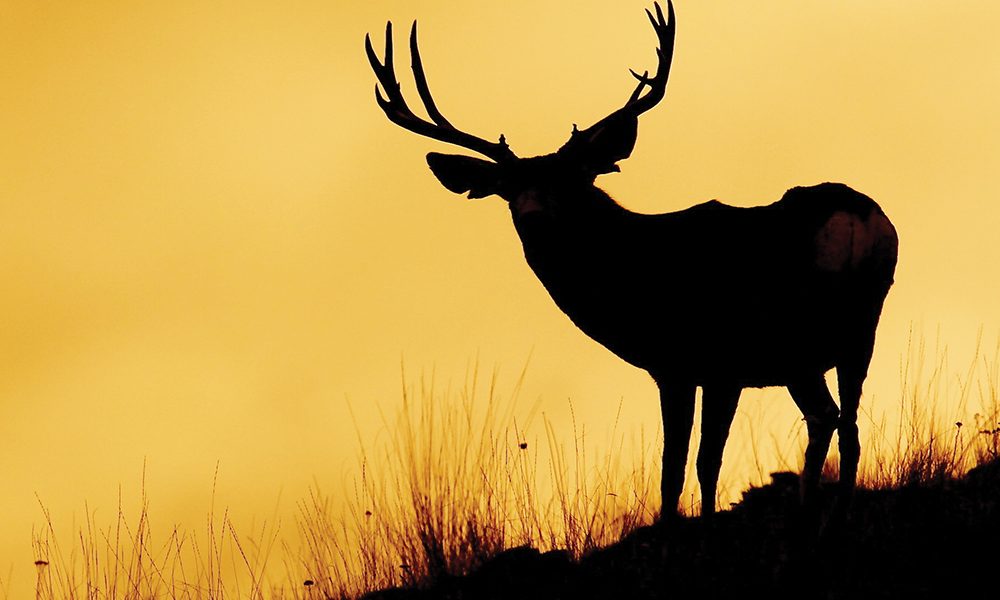
 Area hunters will once again take to the fields, forests and hills in Eastern Oregon
Area hunters will once again take to the fields, forests and hills in Eastern Oregonwhen deer rifle season kicks off Saturday, Oct. 1. (Submitted photo)
By John L. Braese
The Malheur Enterprise
VALE — Although wildfires have displaced hunters from some prime spots, the general outlook for the hunting season appears bright.
Rifle season starts for deer hunters Oct. 1.
Following is the outlook from the Oregon Department of Fish and Wildlife and the Oregon Hunters Association.
Deer
After last year’s dry conditions – all of Oregon was in severe drought and 50 percent of the state was labeled as extreme drought – this year appears better for the deer population.
Wildlife officials say deer numbers are up across the state.
“We had normal winter precipitation and a wet spring,” said Autumn Larkins, ODFW assistant district wildlife biologist for Harney County. “Water availability is much better this year.”
With more ponds and creeks still holding water this fall, the deer should be better distributed throughout the local area. Current estimates place the deer population at 226,775.
This number does not include black-tailed deer found on the other side of the state.
ODFW has put 650 GPS collars on mule deer in eastern Oregon to track movement and habitat use.
“In some places, deer movement have come as a surprise,” said Phil Milburn, district wildlife biologist in Malheur County. “We are seeing a wintering deer population disperse into as many as seven different summer ranges.”
ODFW’s tracking information indicates the animals “tend to avoid the highest elevation forest habitat unless there is a burn or logging activity.”
“They might use dense national forestland to pass through, but spend more time in disturbed habitat like brush fields and old fires at mid-elevation,” Milburn said.
In the Beulah unit, fawn ratios are 31 for each 100 does according to the most recent count. Older age class buck numbers should be similar to recent years. Biologists are predicting fewer deer will be in the desert portion of the unit.
The Owyhee Unit continues to struggle with continued fires and weed invasion into the habitat. This is only the second year since 2009 that fawn recruitment has been sufficient to maintain the population.
In 2015, 57 percent of hunters in the Owyhee Unit found success, and reporting shows a number of mature bucks remain in the area. Last year’s Soda Fire burned much of the area and rehabilitation still is going on.
The East Whitehorse Unit continues to have low deer numbers this year. The Holloway Fire in 2012 burned much of the habitat in the Trout Creek Mountains, and hunter success has remained higher than the 15-year average for the area. Biologists report the higher elevations have decent vegetation and the deer summered well.
ODFW advises hunters that the deer will be most active in the early morning and late afternoon hours, when temperatures are cooler. Hunters should “concentrate their efforts in areas of good forage near north slopes that provide good bedding.”
Elk
Elk appear to be doing well in the region. Increased alfalfa acreage is drawing hungry elk, and ODFW numbers for damage issues are on the rise, reflecting that.
East Beulah is an area with high tag numbers and long elk seasons in an effort to bring the population into control. However, hunters in the early part of the season may have poor success rates unless they have access to private lands.
As winter conditions move in, late hunts will be more successful as the elk move to more accessible lands.
The Whitehorse unit is reporting few elk this year. An increasing number of elk have been observed in the northwestern portion of the Owyhee unit. According to ODFW, these elk are being observed in large groups, but tend to range widely and their location may be difficult to predict consistently.
Elk herds in the Baker area wintered well and bull ratios are at management objectives for all units. Calf ratios are above the average for all units.
Like deer, elk will be most active in the early morning and late afternoon after temperatures cool off.
Bighorn sheep and Rocky Mountain goat
With fewer than 100 bighorn sheep tags and 20 Rocky Mountain goat tags offered, hunters drawing these “once-in-a-lifetime” tags this year must consider some problems challenging these hunts.
No bighorn sheep tags will be available in the Owyhee Unit due to an outbreak of a new strain of Mycoplasma ovipneumonia, a respiratory pathogen that can cause pneumonia in the sheep. It was first detected in the area in 2015, and the sheep population decreased 50-60 percent over nine months, according to helicopter surveys.
“Our biggest concerns at this point is the level of infection, how prevalent the bacteria is in our herds, and whether we can devise a management strategy to mitigate the effects of a pneumonia outbreak,” said Dr. Colin Gillin, ODFW wildlife veterinarian.




